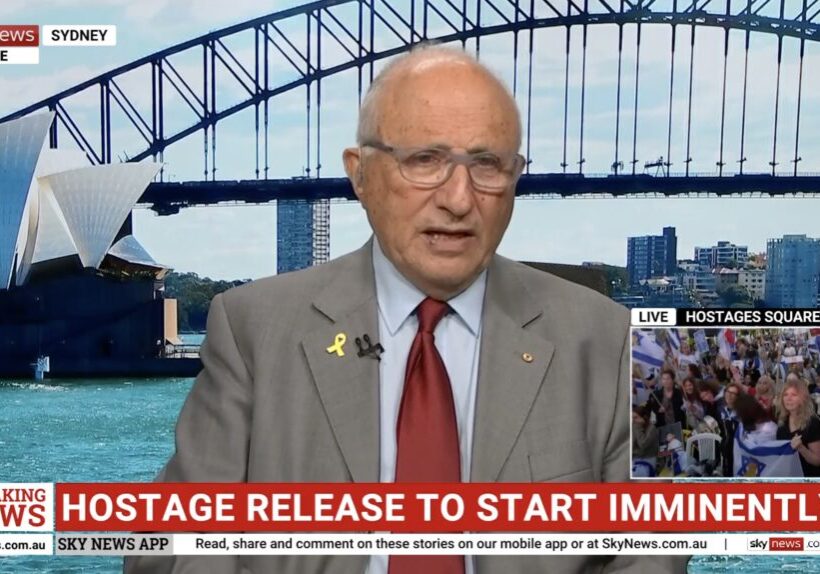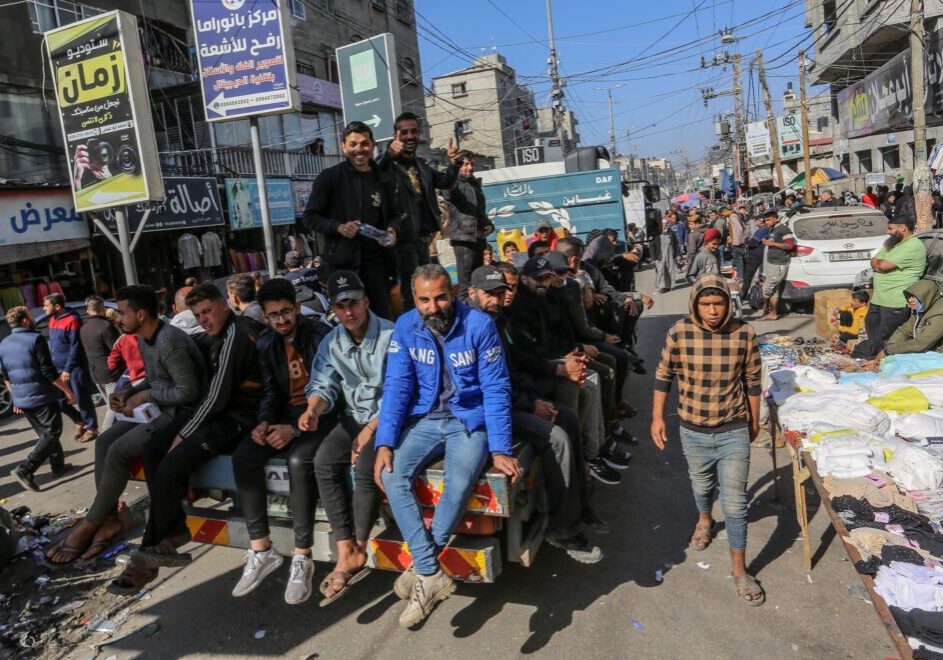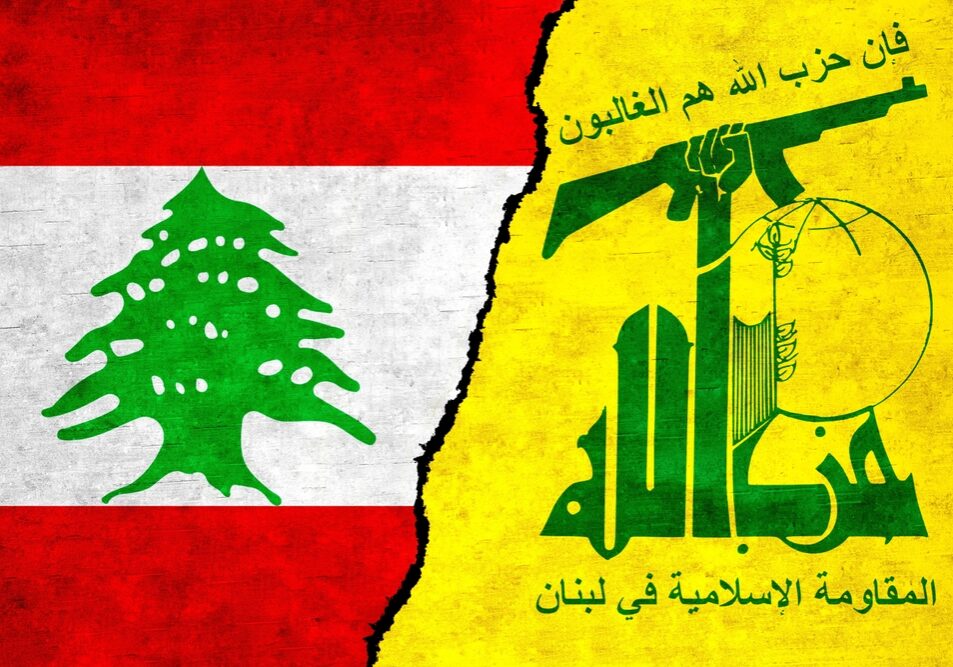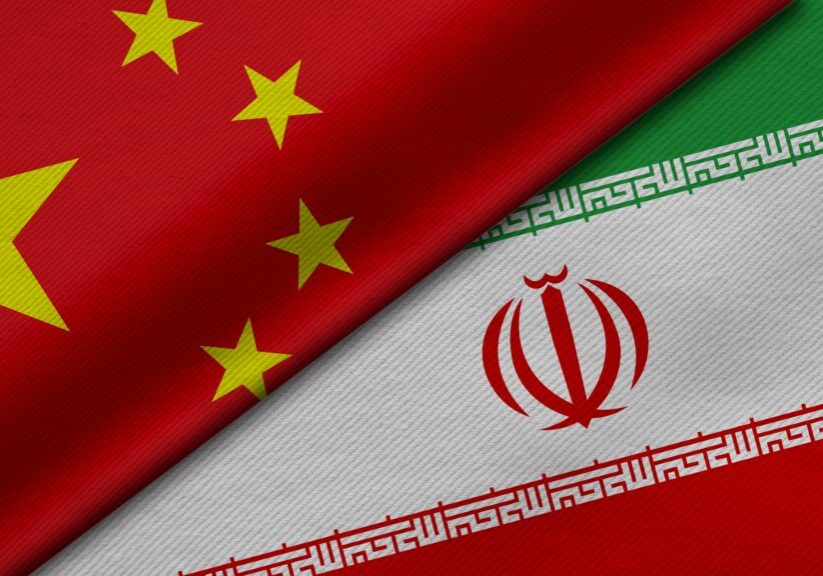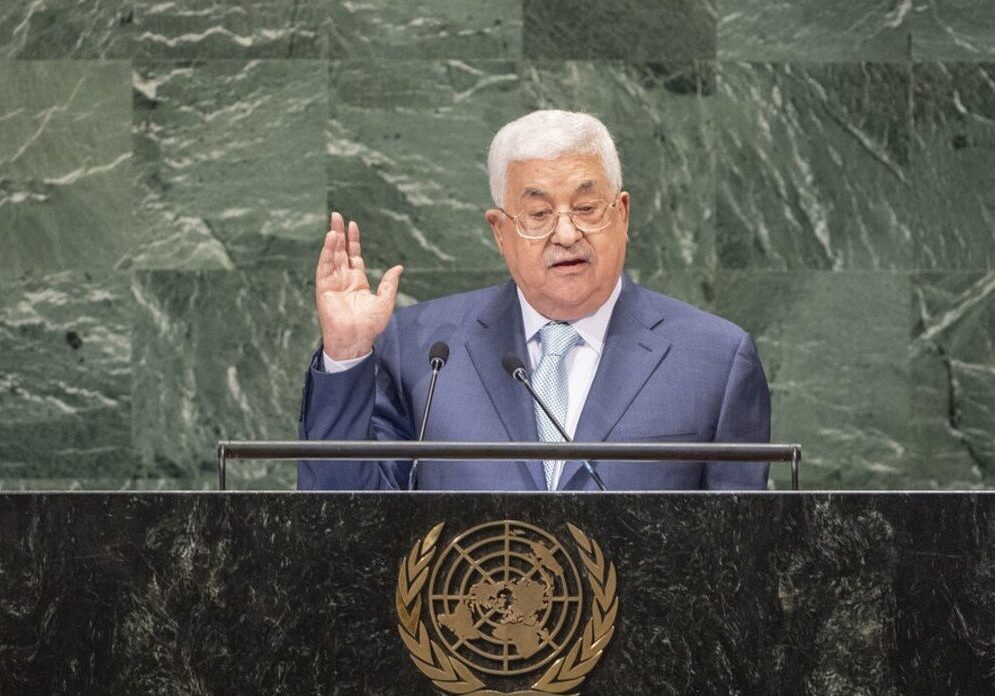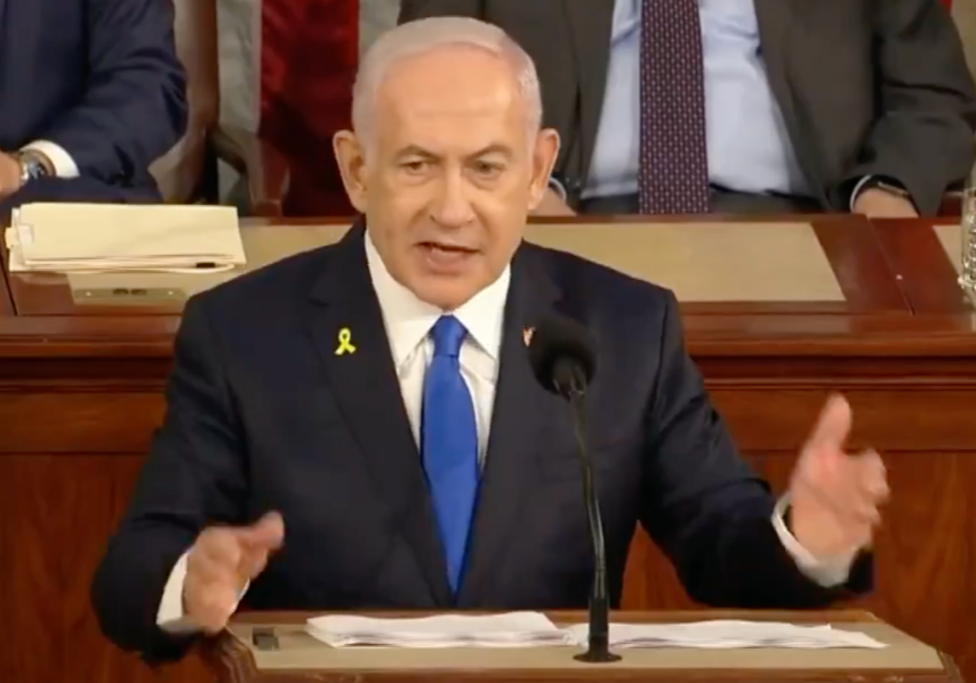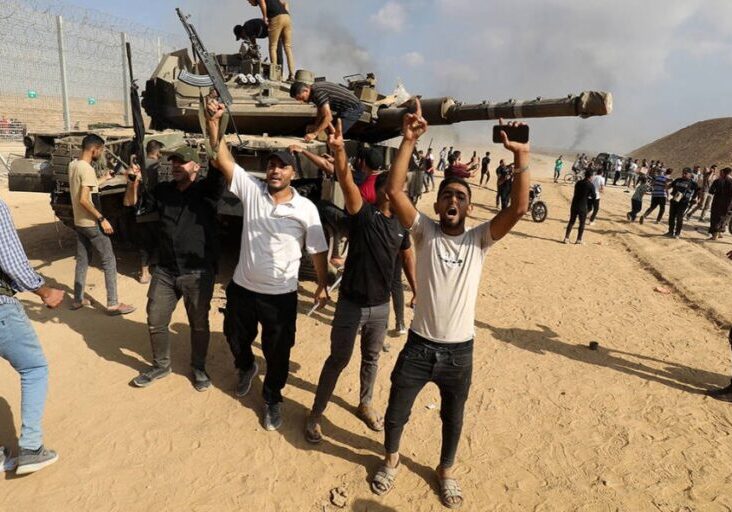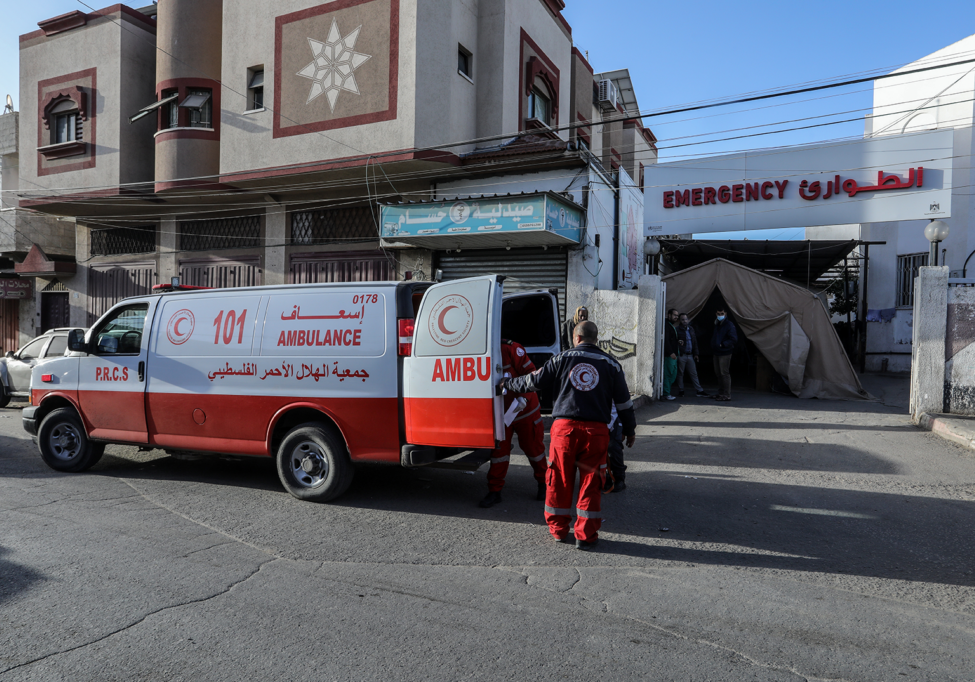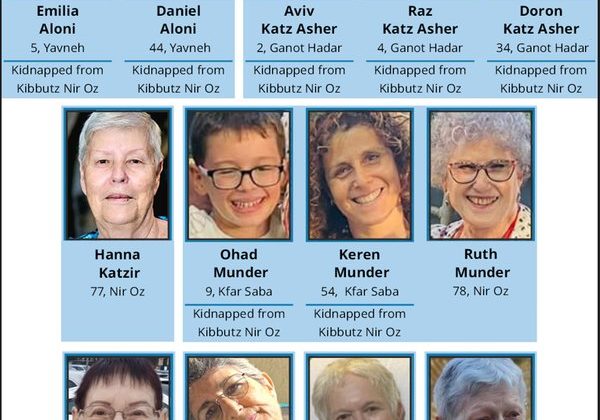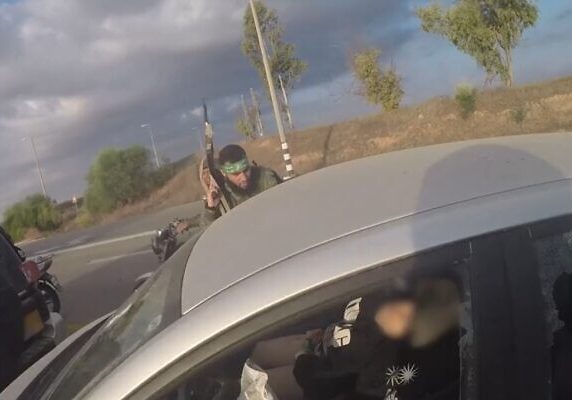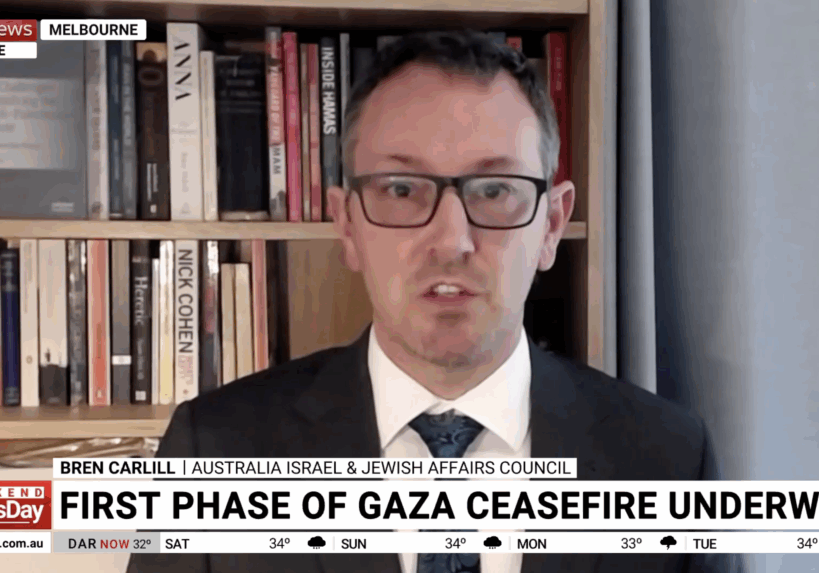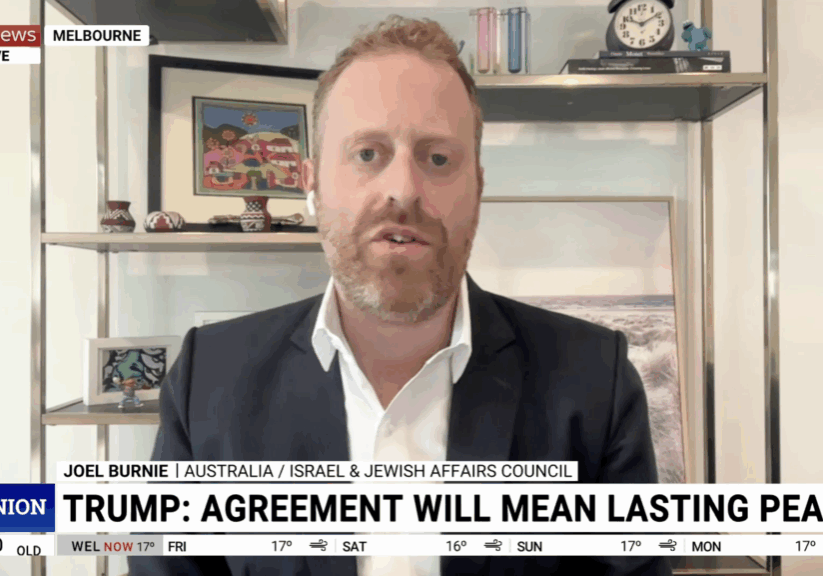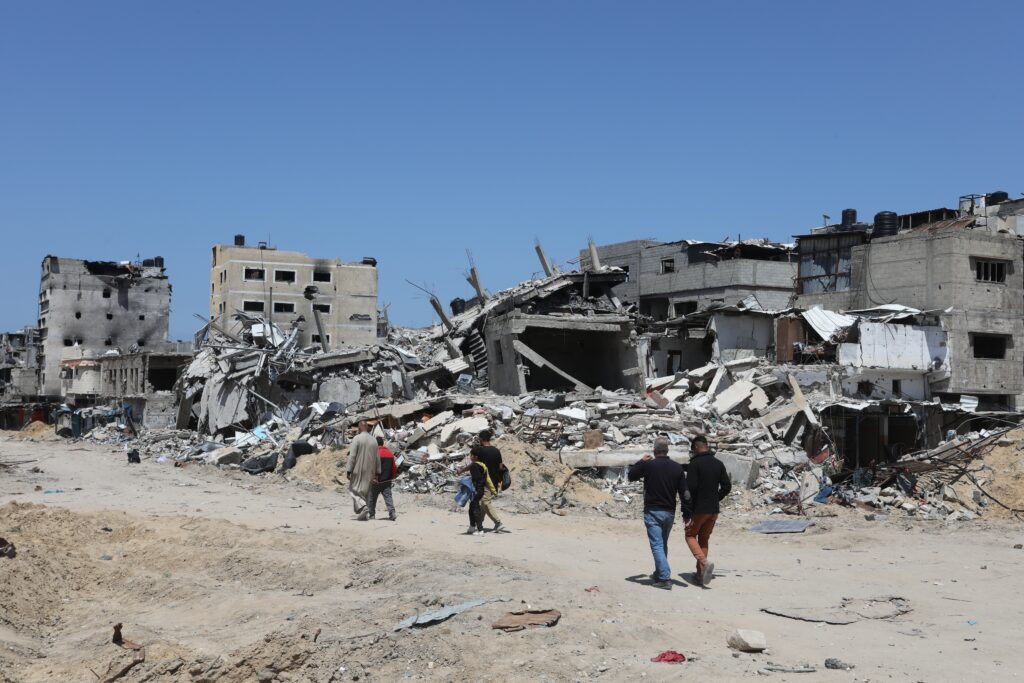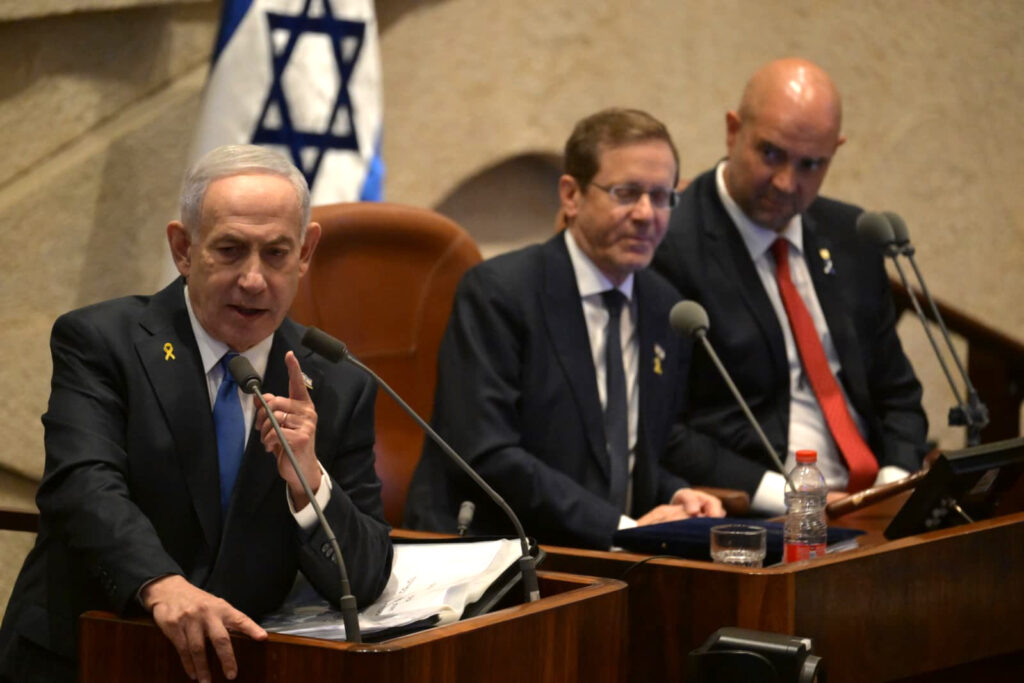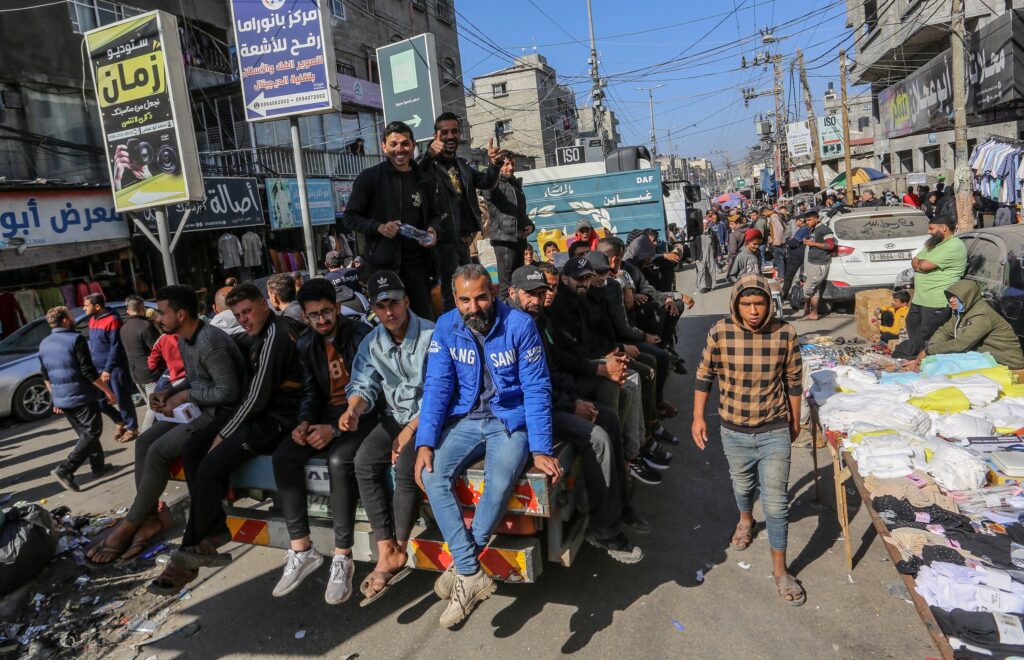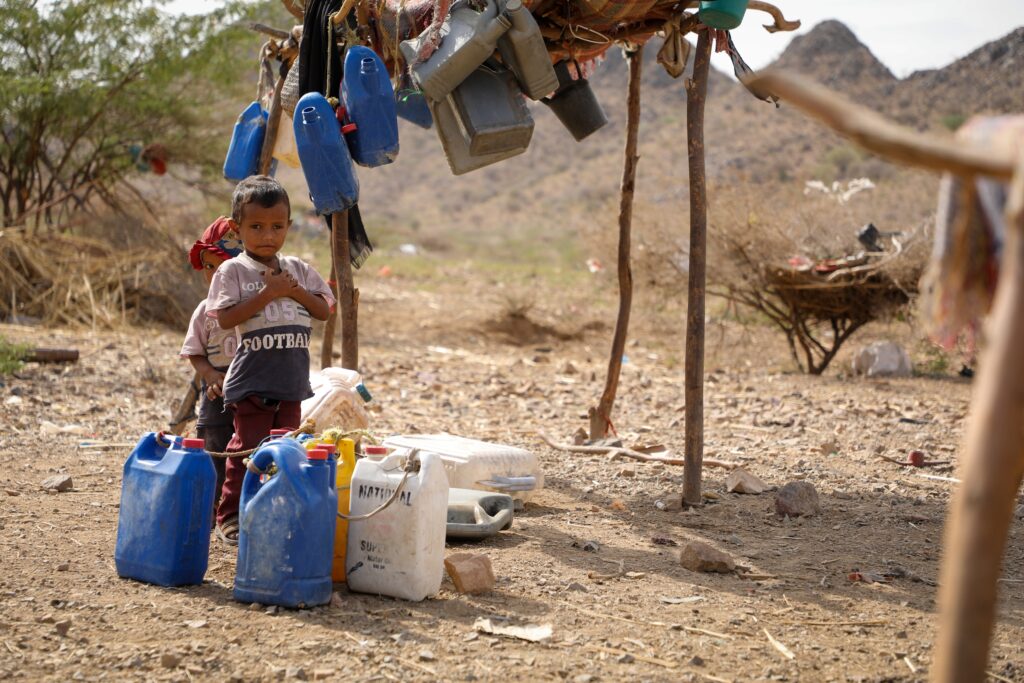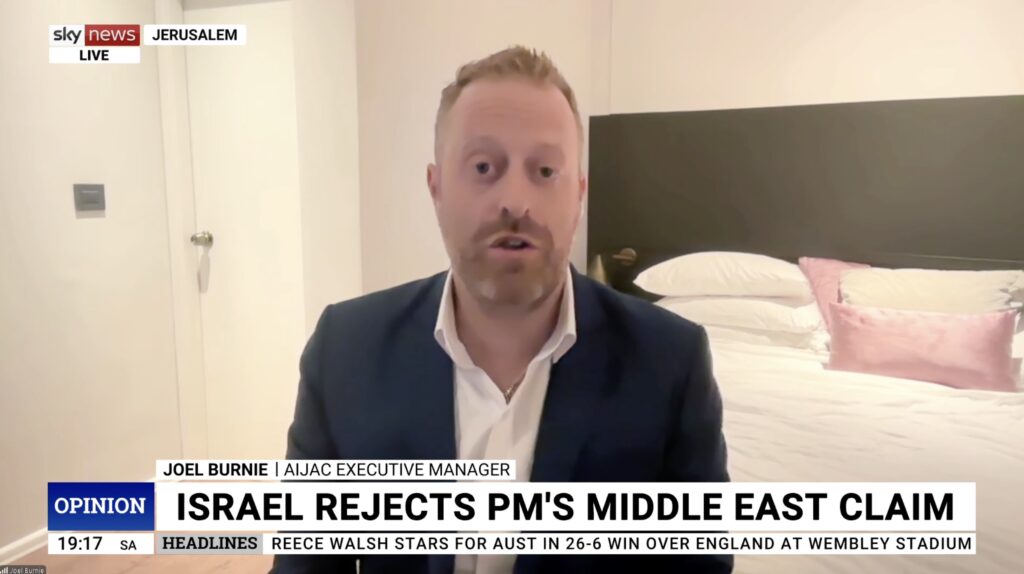FRESH AIR
War Update: Operation Rising Lion – US joins the fight
June 23, 2025

Today’s AIJAC Iran war update once again brings you rare and exclusive interviews, fresh analysis and commentary from Hebrew Israeli media.
Today’s update includes:
- On Channel 12 news’ website N12, award-winning analyst Ehud Ya’ari looks at the strategic picture in the war following the US bombing of Iran’s nuclear sites, discussing what threatening cards Iran still has to play, and what scenarios may arise.
- In an interview conducted in English with Israeli Army Radio’s Efi Triger, the Washington Institute’s Dennis Ross says that the world is safer now that the US has bombed the fortified Iranian uranium enrichment site at Fordow.
- Finally, in a Ynet feature-length analysis from over the weekend, veteran military correspondent Ron Ben-Yishai reveals that on the eve of Israel’s attack on Iran, the Islamist regime was preparing to vastly increase its missile production, creating a conventional missile threat against Israel equal to two atomic bombs.
The story isn’t over — Iran still holds an important card in the negotiations
Following the American strikes in Fordow, Khamenei faces a critical choice between exploiting the enriched uranium card that may still be in his possession, or insisting on continuing the fighting, which will eventually lead to negotiations under harsher conditions from his perspective • The thunderous Iranian threats, it seems, are not necessarily backed by capabilities
Ehud Yaari
N12
June 22, 2025
The American strikes in the early morning hours on June 22 are not the final word. The decision regarding which direction we move from here lies with Khamenei, and one of his central considerations is tied to the answer to the riddle — how much material from the 450 kilograms of uranium enriched to a level of 60% still remains in his possession, in hiding places.
The enriched material, as is well known, can allow for the production of an improvised bomb even in a side laboratory, and if so, then Iran holds a significant card to take with it to the negotiating table. Let it be emphasised: even in the 2015 agreement, and also in the most recent contacts, Iran was willing to transfer the enriched material out of its territory to Russia. However, it still insists on its right to enrich uranium at a low level. Such enrichment, of course, also allows for the operation of centrifuges to military-grade enrichment levels.
Let us recall the series of threats by which Khamenei sought to deter Trump from launching a strike. He threatened to block the Strait of Hormuz — a dramatic move that would halt the flow of oil from the Persian Gulf — but it is not at all clear that Iran is capable of carrying out such a blockade and sustaining it. Mines have already been met with effective responses in previous crises, and under the complete air superiority of the air forces of the United States and Israel, the ships of the Iranian navy — including the UAV carriers that fled to sea from the port of Bandar Abbas — would be sitting ducks. In the meantime, the tankers today began moving only within the territorial waters of Oman in the Strait of Hormuz, without entering the Iranian maritime zone.
The second threat was to issue an order to Hezbollah to bring out of hiding the missiles still in its possession, mainly in the Bekaa Valley. The remnants of the organisation’s leadership and command are apparently not eager to risk such a move — although the final word has yet to be spoken.
The threat to attack American bases in the region, especially in Iraq, is not new, and there have already been dozens of such attacks in recent years without real success. The Shiite militias in Iraq are entangled in internal quarrels ahead of the general elections in November, and they are under heavy pressure from the government in Baghdad to avoid adventures. Again, it is too early to guess how they will act, but it is important that the response not be immediate, according to a pre-prepared threat scenario.
Another threat — to attack the major oil facilities in Saudi Arabia and the Emirates — is apparently also not yet on Iran’s agenda. It is also worth noting that there is currently a large global fuel stockpile, even in the event of a brief disruption in Arab oil exports.
Khamenei must therefore decide whether to try to return to negotiations in the hope that Trump will retreat from the demand for “total surrender,” in order to formulate a framework of principles toward a detailed agreement, or to persist in the fighting, absorb more and more, and reach the moment when he enters negotiations under worse conditions.
Dennis Ross: ‘ Enormous opportunity to change for the longer term the landscape of the region’
Good Morning Israel
Army Radio
June 22, 2025
Efi Triger: Now we have a special interview with Dennis Ross, former special advisor to the National Security Council, special envoy of President Clinton, also advised the government and Secretary of State Clinton at the time. Today he is a research fellow at the Washington Institute for Near East Policy.
Dennis Ross, former advisor, special advisor to the National Security Council and special envoy of President Clinton, today he is a fellow at the Washington Institute for Near East Policy, thank you very much for joining us Mr. Ross, hello and good morning from Israel.
Dennis Ross: Thanks, good to be with you.
Efi Triger: Thank you very much again. First of all, your reaction to President Trump’s announcement, the attack on Fordow, Natanz and Isfahan. The President calls it a spectacular military success.
Dennis Ross: I hope it is precisely that. I think the world is probably safer tonight because of it. I think it’s very important that the United States has taken this step. I think the message that the President is sending to the Iranians is that he doesn’t intend to do more unless they force his hand.
So now we will see that Iran, I think, has a real dilemma. We know this regime, we know the Supreme Leader—he will feel the need to do something in response. But everything about his behaviour over the years has been to avoid a direct war with the United States.
So now he is torn between feeling the need to do something to respond and yet a fear that if he does, that can also produce an ongoing war and that might actually threaten the regime. So we’ll have to see what he does.
It may be that he chooses indirection, chooses acts of terror, chooses to act against some of the Arab states—maybe the Saudis or Emiratis—something to try to show that he can impose a price on us, even as we have imposed a big price on the Iranians.
Efi Triger: A real dilemma. The Supreme Leader will feel that he has to respond, but from everything we know about him so far, we know that everything he has done over the past decades—he avoided a direct war with the United States. So there is a dilemma between what he has done so far, the principles of what he has done so far—he avoided a direct war with the United States—and the need to respond. Maybe he will go in the direction of acts of terror, maybe he will respond against neighbouring states like Saudi Arabia, the Emirate.
Dennis Ross: Everything he has done has been nothing short of amazing: decapitating the Iranian military, decapitating the Revolutionary Guard, taking out the leaders of the Basij militia, killing the leading nuclear scientists, basically going after and destroying much of the nuclear infrastructure and much of the ballistic missile producing capability, having complete mastery over the Iranian airspace—it’s extraordinary.
And the President understands clearly that it has been extraordinary. What we did today was made easier because the Israelis had also taken out all the air defence. So this was an important act acknowledging what Israel has done, what Israel’s military has done, and it was also obviously a very big step for President Trump to take—especially because it was pretty clear for the first several months of his administration, he wanted to do a deal, he didn’t want to use force.
Efi Triger: The military action to attack Fordow, Natanz, and Isfahan goes against everything that most of his supporters believe—the MAGA movement. Do you believe that this will create a problem for him?
Dennis Ross: It is very interesting—he has taken on his base. People like Steve Bannon and Tucker Carlson were very clear that Israel should finish what it started, Israel shouldn’t draw the US into this, this is the last thing the US needed to do, this is against the essence of the MAGA movement.
But President Trump clearly made a decision, and he decided to take on his base. When he said Iran was not going to have a nuclear weapon, it’s very clear that he meant it. And he’s made a basic judgment—he himself has said he’s the one who was coining “America First,” so he’s the one who defines it.
It will be very interesting to see what happens within the Republican Party. Right now, much will depend upon whether or not, as the President has made clear, he wants this to be over with now. But that depends upon what the Iranians do, and he certainly threatened the Iranians that if they decided to retaliate, there were many more targets that the US was prepared to hit.
Efi Triger: You are a fellow at the Washington Institute for Near East Policy, and I understand that you met there a few years ago Eyal Zamir, who is now, of course, the Chairman of the Joint Chiefs of the IDF. I’m guessing you had many talks about Iran, academic talks.
Dennis Ross: I did. He actually wrote a very big monograph for the Washington Institute, laying out a very broad strategy. His office was next to mine, so yes, we had many talks about this.
He had a very clear strategic view of Iran—the nature of the threat and what was necessary to be able to overcome it and counter it.
Efi Triger: And do you believe that the way the IDF enacted the Operation Rising Lion since last Friday coincides with what you heard from him 2–3 years ago?
Dennis Ross: It was certainly consistent with both the operational tactics but also the broader strategy. One of the things that he understood is: militarily, you can have great successes, but you have to also be able to translate those into enduring political outcomes.
So on the one hand, we have very significant and impressive achievements—they still have to be translated into something that will be more enduring.
Efi Triger: When you say a political act, do you believe—do you mean a successful exit strategy, a way to end the war?
Dennis Ross: I do. But what is required is a very clear set of objectives that you want to achieve, and then the ability to conclude the war having achieved those objectives. What you don’t want to do is get caught in an endless kind of war of attrition that will erode some of the achievements.
It won’t change one reality—this war has already achieved the dramatic weakening of Iran. Everyone in the region sees that. And it’s on top of what Israel has already done in terms of decimating Hezbollah. Hamas is no longer a military the way it was on October 7th. Assad is gone, which means the key geopolitical, geostrategic linkage between Iran and Lebanon is gone.
So there are dramatic changes that have taken place. And now, the weakening of Iran creates an enormous opportunity to change for the longer term the landscape of the region. But the key is now to take advantage of these opportunities that the Israeli military has produced.
The trigger: Intelligence on an intention to produce 10,000 missiles with the destructive potential of two atomic bombs
The decisive consideration for going to war with Iran lay in chilling intelligence. “I want us to fly over Tehran like we fly over Jabaliya,” the Air Force commander told his men. The Mossad is also playing a critical role, participating in the hunt for launchers and serving as an arm of the IDF on enemy soil. A security official clarifies: “If necessary, we will deal with the facility in Fordow ourselves.” And at the top of the Israeli leadership, there is already talk of the next objective: creating conditions for the regime’s downfall.
Ron Ben-Yishai
Ynet
June 21, 2025
The very senior officer who spoke to me from a side room in the Air Force command bunker late at night sounded tired and clear-headed, far from euphoric. “The enemy will recover from the blows we’ve dealt them,” he said. “In their air defence system, it’s already happening. They’re trying to rebuild the SAM (surface-to-air missile) array we destroyed in Tehran using batteries they’re sending from all over Iran. We see it and strike them. They still have active detection and alert systems, and even today they launched SAMs at our aircraft. But we anticipated this would happen, which is why right at the start we inflicted severe damage on their C2 (command and control). In the first three minutes of the war, we took out (that is, eliminated) for Leader Khamenei the most important people he talks to and the mid-level command of the Revolutionary Guards and the army command, and therefore the recovery will be slow.”
The veteran pilot, a brigadier general responsible for the operational core of the Air Force, had just monitored a lightning operation to destroy launchers and surface-to-surface missiles (SSMs) that the Iranians were about to fire at the Israeli home front. The aircraft were already on their way back, and he—calm but far from underestimating the operational and intelligence capabilities of the enemy—was extremely careful not to reveal any information about plans, intentions, or classified weapons systems. But it was clear from his words that, in his assessment, the disconnection of Supreme Leader Khamenei from his trusted advisors who had implemented his orders for years had critically damaged the functioning ability of the Iranian state and its two militaries—the Revolutionary Guards and the Artesh, the regular Iranian army. That’s how it is in a centralised regime like Iran’s, where the Supreme Leader is the final authority on everything.
From the Air Force’s perspective, the most critical elimination was that of the commander of the Air and Space Force of the Revolutionary Guards, Amir Ali Hajizadeh, and two of his deputies, already in the first strike. Hajizadeh had planned and initiated, among other things, the explosive UAV and cruise missile attack that paralysed half of Saudi Arabia’s oil industry in September 2019 for nearly half a year, and he had commanded two missile and UAV attacks against Israel in the past year.
His two deputies were also key figures now sorely missed by the Iranians. One was the head of the intelligence branch in the Revolutionary Guards’ Air Force, and the other was the commander of the entire Iranian SSM force. Their absence is evident in the faltering management of the Iranian defence system and in the missile launches toward Israel, which are becoming more sparse….
And overall, the opening aerial strike, delivered against “time-critical” targets—i.e., those liable to disappear within minutes—achieved initial results far beyond expectations. It struck critical segments of the air defence systems and granted the Air Force initial superiority—namely, limited aerial freedom of action over western Iran, which later expanded to additional regions.
At the same time, the Mossad operated on Iranian soil, using short-range surface-to-surface missiles and attack drones to disable air defence systems and ballistic missiles. The strike was enabled by precise real-time intelligence provided by the Iran Division, established by the head of Military Intelligence, Maj. Gen. Shlomi Binder, at the end of 2024, when the decision was made to prepare for the strike. But it is important to remember that the bulk of the operational and intelligence infrastructure was supplied by the Mossad, which became the IDF’s special forces arm inside Iran.
Security officials point to the exceptional cooperation between the IDF and the Mossad, which began preparing for this war already two years ago and is actively participating in it, including in the hunt for launchers.
Iranian security agencies, aware of the Mossad’s critical role, are now conducting a manhunt across Tehran in an attempt to locate Mossad agents and operatives, indiscriminately arresting people in the streets.
The blow dealt by Israel successfully struck the bottlenecks of the nuclear weapons project and the surface-to-surface missile array. The most important immediate result is that the “uranium reconversion” plant in Isfahan was rendered inoperative. This plant was meant to produce the uranium metal cores for the nuclear explosive devices, and its shutdown prevents a rapid breakout to nuclear weapons. This is in addition to the strike on the uranium enrichment facility in Natanz, which neutralised most of its centrifuges and thereby disabled for a long time about half of Iran’s uranium enrichment capacity. The other half is located at the enrichment facility in Fordow.
It appears that Jerusalem hoped the U.S. would deal with the Fordow facility—located beneath 80 metres of hard bedrock—using munitions and aircraft that only the U.S. possesses. But Israel received no such promise from Trump—and didn’t ask for one. Fordow’s turn will come too, several Israeli decision-makers assure me. According to them, if the Americans do not strike Fordow, or alternatively—if no agreement is reached that includes dismantling the centrifuge arrays at the site and removing them from Iran—the IDF will do the job. “Make no mistake: if needed, we can deal with Fordow ourselves,” says someone familiar with the plans and capabilities.
In the crosshairs: the weapon group
It is important to understand that “Operation Rising Lion” is not a classic modern war like the Russia-Ukraine war. What makes it even more exceptional is the fact that it has no ground dimension, and the sides are not seeking to conquer territory or uproot hostile elements from it. This is a war over capabilities. Israel is trying to deprive Iran, for many years, of conventional and non-conventional military capabilities that constitute an existential threat—and in addition, without openly declaring it, to create conditions that would eventually lead to regime change by the Iranian people. Iran, for its part, is trying to foil Israel’s intentions and end the war in a position that would allow it to rehabilitate its capabilities, continue developing them, and maintain regime stability.
I do not intend to delve into the history or politics—or even the motives and considerations of Prime Minister Netanyahu that led to the war with Iran. I will only note that in my view, the leaders’ considerations were legitimate, and the proof is that all the heads of the security establishment and the intelligence community were unanimous in the need to go to war and enthusiastically engaged in its preparation.
What led to consensus between the political echelon and the defence establishment was a rare convergence, in recent months, of an urgent need, a strategic opportunity, and matured intelligence and strike capabilities.
The urgent need arose, according to assessment sources, after the assassination of Nasrallah and the severe blow Israel dealt to Hezbollah—and more so after the collapse of Assad’s regime in Syria. Khamenei and his loyalists reached the conclusion that they were exposed and weak when their main proxies—especially Hezbollah—were incapable of helping defend Iran if it were attacked by Israel and/or the United States. In light of this, Khamenei gave his scientists approval to accelerate the activities of the “nuclear weapon group,” tasked with developing the nuclear explosive device itself and, subsequently, building the bomb or warhead to be mounted on a surface-to-surface missile.
According to Israel’s intelligence community, the activity of the weapon group significantly accelerated since the end of 2024. It operated through sub-groups of scientists, each working on a different component or material used in the nuclear explosive device. The goal was to reach a point where all the sub-groups would complete their tasks, and then within a few short weeks, it would be possible to enrich uranium to weapons-grade and assemble a rudimentary explosive device. In such a scenario, Iran would cross the nuclear threshold and could threaten its enemies with an atomic weapon—especially if it were to conduct a successful nuclear test.
However, from a conversation this week with the senior officer in blue uniform, it emerges that the urgent need to act did not stem primarily from fear of an imminent nuclear breakout, but rather from the intelligence insight that Iran is preparing to rapidly produce thousands of heavy, long-range ballistic missiles.
The quality and accuracy of these missiles—some of which have manoeuvrable warheads—and especially their quantity, would allow a significant portion of them to “saturate” and penetrate our air defences, even if all Arab and Western countries joined the defensive effort.
The Iranian intention, as revealed in reliable intelligence materials received by the West, was to produce dozens of such missiles per month (alongside a large number of launchers—without which the missile is a useless shell), and to reach, within a decade, an arsenal of about 11,000 missiles, each with a warhead containing between 400 and 1,000 kilograms of explosive material.
This is indeed a conventional threat, but one that could cause Israel—a small country in area—casualties and destruction equivalent to two nuclear bombs, if the missiles were fired at us in salvos. We would not be able to intercept them even if we had a powerful laser weapon.
With this threat hanging over the region, no country or actor in the world—including Israel—would dare to attack the Iranian nuclear project. Even the United States would refrain, fearing harm to its interests and bases in the region.
The alarm bells began wailing after October 2024, when Israel destroyed five production sites for solid fuel used in such ballistic missiles (solid fuel allows for rapid launch without prior fuelling. Using liquid fuel reveals intentions and allows for a strike on the missile while still on the launcher).
The Israeli intelligence community had assessed that destroying the solid fuel mixers would significantly delay Iran’s acquisition of heavy SSMs. But they recently discovered that Tehran had instead accelerated missile production..
Five events created this opportunity:
• The achievements of the IDF in the Iron Swords War, which incapacitated Hezbollah, Syria, and Hamas, thereby weakening the ring of fire with which Iran surrounded Israel.
• Trump’s election as president and his willingness to provide Israel with full logistical support, munitions, interceptor batteries, and political backing for a strike on Iran.
• Iran dragging its feet and Khamenei’s arrogant refusal to discuss with the U.S. the removal of enriched uranium from Iranian territory and the halting of the missile programme.
• The weakening of the Iranian air defence system following the blow delivered by the Air Force last year to S-300 SAM batteries.
• The International Atomic Energy Agency (IAEA) report which determined that Iran had violated its commitments and enriched 450 kg of uranium to 60% purity—just a step away from the 90% required to assemble a nuclear device. That was the final nail of legitimacy Israel needed.
The IDF’s top brass, from the Chief of Staff down, sought to focus on achieving three attainable goals through military means:
- First goal: to critically damage all components of the nuclear project in a way that would prevent its restoration for years. That’s why it was also necessary to eliminate the scientists of the weapon group, who retained in their minds and records the knowledge accumulated thus far. There was also a need to destroy the project archive and the factories that manufacture enrichment centrifuges, and to eliminate the engineers involved. But the “Holy Grail” is the uranium enriched to 60%, which the Iranians are still hiding in a secure location, in quantities that—were it not for the damage to other production components—would have sufficed to produce around ten cores in a short time.
- Second goal: the “hunt” for heavy SSM (surface-to-surface missile) launchers and the destruction of factories and raw materials used to produce such missiles.
As of Wednesday, out of more than 300 SSM launchers Iran possessed on the eve of the war, about 200 have been hit; out of 2,500 ballistic missiles, they launched around 400, and Israel struck several hundred more on the ground. But they still have launch capabilities. Out of eight SSM arrays, the Air Force managed to destroy three, which were located in western Iran and whose flight time to Israel is about 12 minutes.
However, Iran is a large country, and SSM and SAM (surface-to-air missile) arrays are still active in the centre and east of the country, where the Air Force does not yet enjoy near-total air superiority as it does in western Iran and Tehran.
A large part of the hunt for launchers and surface-to-surface missiles (SSMs) is being carried out by the Air Force’s strike UAVs. The results are better than in any of Israel’s other theatres of warfare—partly because the Iranians are launching almost exclusively from open desert areas, rather than from populated areas like Hamas and Hezbollah do, and partly because the target intelligence provided by Military Intelligence (Aman) to the Air Force is more accurate than ever before.
Our and the Americans’ interceptor systems are downing most of the missiles, but two or three hits are enough to cause casualties and heavy damage—physical or symbolic (for example, the hit on Soroka Hospital).
An even more impressive achievement was recorded by the Air Force when it intercepted all 250 explosive UAVs that the Iranians launched at our territory up to Wednesday. This stands in contrast to the difficulties in intercepting the deadly UAVs launched by Hezbollah from Lebanon. There’s a simple explanation for this: when UAVs approach from a known direction and from hundreds of kilometres away, it’s easier to detect and destroy them long before they reach Israeli territory. In Lebanon, they were sometimes detected seconds before hitting their target.In addition, the Air Force has drawn operational and technical lessons, as reflected in dramatically improved interception rates.
- The third goal: to prevent a surprise attack by Iran’s proxies, especially Shiite militias along our borders, and to thwart Iran’s attempts to arm and incite Islamist elements in Jordan and Judea and Samaria, in order to relieve pressure on itself….
[The complete Hebrew article text, on the Ynet website, can be auto-translated in most browsers or, more accurately, through AI services including Google Gemini and ChatGPT.]
Tags: Hebrew media, IDF, Iran, Israel, Operation Rising Lion
RELATED ARTICLES

“Bittersweet” aftermath of hostage release deal: Joel Burnie on Sky News
